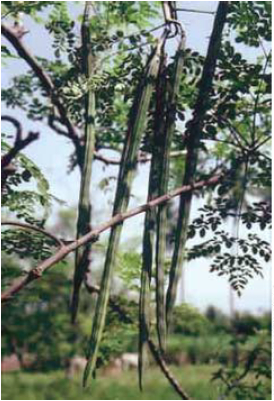Natural coagulation / Flocculation
The sedimentation process can be quickened by adding coagulants to the water.
Coagulation with extracts from natural and renewable vegetation has been widely practiced since recorded time. There is a variety of natural coagulants used around the world, depending on the availability.
Extracts from the seeds of Moringa oleifera can be used, the trees of which are widely present in Africa, the Middle East and the Indian subcontinent. Strychnos potatorum, also known as clearing nuts or the nirmali tree, is found in India to treat water. Prickly pear cactus is prevalent and traditionally used in Latin America. There are also reports of other natural coagulants being used, such as fava beans.
How Does it Remove Contamination?
Coagulants contain significant quantities of water-soluble proteins which carry an overall positive charge when in solution. The proteins bind to the predominantly negatively charged particles that cause turbidity (e.g. sand, silt, clay).
Coagulation happens when the positively and negatively charged particles are chemically attracted together. They can then accumulate (flocculation) to form larger and heavier particles (flocs). The flocs can be settled out or removed by filtration.
Bacteria and viruses can attach themselves to the suspended particles in water that cause turbidity. Therefore, reducing turbidity levels through coagulation may also improve the microbiological quality of water.
Construction, operations and maintenance
Little research has been done to optimize and standardize the use of natural coagulants. Their use is usually passed through traditional knowledge in the community.
Generally, natural coagulants are not available in a usable form and need to be prepared. This is usually done just beforehand to keep the coagulant fresh. For example, prickly pear cactus needs to be peeled and cut and moringa seeds need to be dried and crushed into a powder.
Users add the prepared dose of coagulant to the water. The water is then stirred for a few minutes to help create flocs. The flocs can be settled out and the clear water is decanted, or removed by filtration.
Robustness
- Availability depends on local conditions
Estimated Lifespan
- Dried beans and seeds can be stored for a long time
- Prickly pear cactus needs to be used before the sap dries
Local Production
- Harvested and prepared locally
Materials
- Natural coagulants (e.g. moringa seeds, prickly pear cactus)
- Miscellaneous tools (e.g. knife)
Fabrication Facilities
- Prepared in households
Labour
- Traditional practice, anyone can be taught to prepare and use natural coagulants
